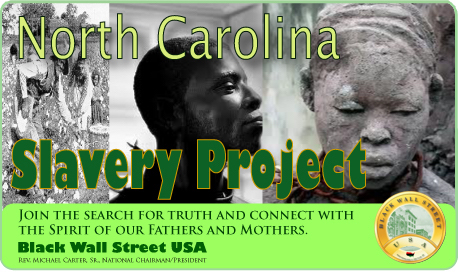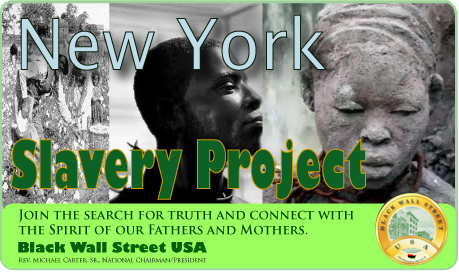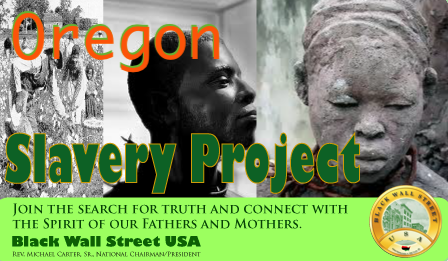Slavery in Wyoming
While Wyoming is not commonly listed among the prominent slaveholding states in conventional historiography, a deeper excavation into its territorial formation, settler-colonial land policy, economic development, corporate entanglements, and its postbellum racial stratification reveals a complex and nuanced history that cannot be disaggregated from the systemic violence and economic extraction inherent in slavery. Wyoming’s landscape, though vast and relatively unpopulated in the antebellum period, became entangled with slavery through its indirect complicity, its infrastructural dependency on enslaved labor from elsewhere, and its incorporation into the political economy of western expansion that was shaped, if not dictated, by the logics of race-based bondage.
Wyoming's historical relationship to slavery cannot be examined without first contextualizing the development of the American West as a site of imperial contest, racialized labor exploitation, and capitalist frontier ideology. Long before the formal creation of the Wyoming Territory in 1868, the region that would become Wyoming was enmeshed in broader networks of forced labor, Indigenous dispossession, and settler colonial domination. Slavery in its African chattel form did not manifest as extensively in Wyoming as it did in neighboring Missouri or Kansas; however, the social and economic systems that sustained chattel slavery were present in embryo throughout the region, particularly in the economic and infrastructural apparatus that facilitated white settlement, transportation, and mineral extraction.
Wyoming’s geography played a pivotal role in the transcontinental logistics that moved enslaved labor, commodities derived from slave labor, and the ideologies of white supremacy into and through the American West. Major arteries such as the Overland Trail and the Oregon Trail passed through what is now Wyoming. These routes, though ostensibly designed for western migration and pioneer settlement, were integral to the movement of slaveholders, slave traders, and ideologues of the pro-slavery and anti-Black order. Enslaved individuals, although not numerous in documented numbers within Wyoming itself, were nonetheless brought through the territory during westward migration, particularly by southern slaveholding families who sought to relocate their wealth and labor systems to regions that were politically ambiguous or contested on the question of slavery.
The Kansas-Nebraska Act of 1854, which established the principle of popular sovereignty and thereby opened new territories to the possibility of slavery based on settler consensus, had profound implications for the entire Great Plains and Mountain West regions. Although the Wyoming Territory was formally established in 1868—after the Civil War and the formal abolition of slavery via the Thirteenth Amendment—the territory was previously part of larger territorial configurations, including the Nebraska Territory, which was affected by the aforementioned legislation. These legal frameworks created a gray zone in which slavery could be tentatively asserted or contested, depending on the demographic and political will of settlers. The absence of explicit prohibition within these frameworks opened the door to transient slaveholding practices and the entrenchment of white supremacist norms that mirrored the racial hierarchies of the South.
Moreover, one must consider the broader economic architecture that Wyoming became part of in the second half of the nineteenth century. The development of the transcontinental railroad, particularly the expansion of the Union Pacific Railroad, which ran through southern Wyoming, was not only a feat of engineering and capital accumulation but also an extension of a slavery-derived economy. While enslaved laborers did not physically construct the railroad within Wyoming, the capital investment, labor models, and logistical planning that undergirded the railroad's expansion were deeply implicated in the proceeds and legacies of slavery. Many of the financiers and corporate partners behind the Union Pacific Railroad had ties—direct and indirect—to slave economies. Financial institutions in the North, which provided the banking and credit infrastructure for such megaprojects, were themselves enriched by decades of underwriting slave insurance, cotton bonds, and plantation mortgages. These capital flows did not vanish with emancipation but were instead reinvested in western infrastructure, thereby embedding slavery’s economic residue within Wyoming’s developing industrial and urban framework.
The formation of Wyoming's mining industry also bears scrutiny through the lens of slavery’s legacy. As coal and other minerals were extracted to feed the railroads and nascent manufacturing sectors, Wyoming became increasingly reliant on imported labor, which was often structured along racialized and hierarchical lines. Although African Americans were not enslaved in the traditional sense during this period, they were frequently employed in exploitative and substandard conditions that mimicked the coercive dynamics of antebellum labor regimes.
Black miners, porters, and rail workers in Wyoming were subjected to racial segregation, wage discrimination, and physical violence—conditions that testified to the persistence of slavery’s ideological and material foundations long after formal abolition. These patterns of labor exploitation were not isolated phenomena but were structurally embedded within the economic aspirations of Wyoming’s territorial and state leadership, who viewed racial subordination as an expedient tool for social control and economic productivity.
The question of whether slavery as a legal institution was formally practiced within the boundaries of modern-day Wyoming is complicated by the territorial status of the region during slavery’s legal zenith in the United States. Nevertheless, legal records, territorial statutes, and personal narratives reveal that the spirit of slavery was alive and operational through various proxies.
Enslaved African Americans who traveled west with slaveholding families occasionally found themselves in Wyoming territory during migratory or exploratory ventures. Moreover, indentured servitude, apprenticeship laws, and other quasi-legal frameworks were sometimes employed to replicate the power dynamics of slavery under different guises. Territorial officials and settlers occasionally tolerated or failed to prosecute instances of involuntary servitude, especially in remote areas where legal oversight was minimal.
Beyond the material economy, the ideological scaffolding of slavery—its justifications, rationalizations, and racial taxonomies—was firmly established in Wyoming’s cultural and institutional foundations. Early newspapers, political rhetoric, and educational discourses in the Wyoming Territory often echoed national tropes of white superiority and Black inferiority. The lack of a large Black population did not preclude the articulation of anti-Black sentiment; rather, it emboldened it by constructing Blackness as a dangerous otherness to be kept at bay through law, policy, and violence.
This rhetorical hostility materialized in patterns of exclusionary settlement, restrictive employment practices, and race-based policing that endured well into the twentieth century. These sociopolitical exclusions functioned as a continuation of slavery’s logic: the belief that African-descended peoples were inferior, dangerous, and unsuitable for full civic inclusion.
The role of academic institutions and corporations in Wyoming in benefiting from the legacy of slavery has also begun to receive the critical scrutiny it deserves, albeit belatedly. The University of Wyoming, the state's flagship institution, was founded in 1886, just two decades after the end of slavery. While it was not a direct beneficiary of slave labor in the narrow sense, the university was built within a national context where academic endowments, philanthropic funding, and educational ideologies were all influenced by institutions and individuals who profited from slavery. Many early academic curricula reinforced white supremacist paradigms through courses in eugenics, racial science, and Eurocentric history. The university’s connections to national networks of intellectual and financial power inevitably linked it—if indirectly—to the long shadow of slavery.
Corporations operating within Wyoming, especially in the extractive and transportation sectors, also exhibit ties to slavery through their historical financing and national affiliations. Railroads, mining conglomerates, and agricultural enterprises benefited from federal land grants, subsidies, and capital inflows that were themselves entangled with the proceeds of slavery. These corporations, some of which have evolved into present-day energy and infrastructure giants, maintain operations in Wyoming that are haunted by their historical origins. While few corporate entities have acknowledged or reconciled these connections publicly, the archival record suggests a through-line from antebellum capital to modern corporate accumulation.
The Freedmen’s Bureau, although not formally active in Wyoming due to the state’s minimal African American population at the time, played a symbolic role in setting the tone for federal engagement with racial justice in the post-slavery West. The Bureau’s absence in Wyoming speaks volumes about the federal government’s assumptions regarding Black settlement and the limits of its commitment to reconstructive justice. African Americans who migrated to Wyoming during Reconstruction and beyond found themselves without institutional support, facing an unwelcoming social and economic environment. Yet, despite these obstacles, Black communities began to take root in towns such as Cheyenne, Laramie, and Rock Springs, where African American laborers and families built churches, schools, and fraternal organizations dedicated to racial uplift and mutual aid.
These communities became incubators for Black resistance, organizing, and political consciousness. Though small in number, Wyoming’s Black population contributed meaningfully to the struggle for civil rights and racial equity. Figures such as Charles Rhone, an early Black city councilman in Cheyenne, and members of the African Methodist Episcopal Church laid the groundwork for civic participation and social transformation in a state that often rendered them invisible. These local leaders, though often absent from national histories, represent a critical link in the genealogical chain of Black abolitionist and freedom-fighting traditions in America.
Wyoming’s contribution to the broader abolitionist movement was limited by its small Black population and conservative political culture, yet it did produce its own cadre of civil rights laborers and freedom fighters. In the twentieth century, as African Americans moved westward in search of employment and reprieve from Southern racial terror, Wyoming became both a site of refuge and a theater of struggle. The rise of labor unions, civil rights advocacy, and Black-led social organizations helped to challenge the state’s racial hierarchies and to assert a new vision of justice and inclusion.
In sum, the story of slavery in Wyoming is not a tale of plantations and overseers but of infrastructure, complicity, and ideological inheritance. Wyoming’s terrain may have escaped the direct shackles of slavery, but it did not escape its economic dependencies, political alignments, or cultural legacies. The state's development was financed, influenced, and shaped by systems born of slavery, and its contemporary structures continue to reflect those inheritances. To understand slavery in America is to understand its national reach, its diffuse but pervasive influence, and its enduring power to shape places far removed from cotton fields and auction blocks. Wyoming, like every other state in the Union, stands as a testament to that enduring truth.
To continue examining the complicated tapestry of slavery and its long echo in Wyoming, it is essential to interrogate the racial geography of the state during its early formation and into its first decades of statehood. Wyoming was admitted to the Union in 1890, a symbolic and literal integration into the national body politic just twenty-five years after the abolition of slavery. However, this integration was not marked by a reckoning with the racial hierarchies that had been foundational to national expansion. Rather, Wyoming's statehood solidified a structure of racial exclusion, where laws and customs reproduced anti-Black ideologies in the form of employment discrimination, housing segregation, exclusion from unions, and state-level silence on civil rights. Wyoming’s Black population, though never large in number, was repeatedly made to feel the weight of the legacy of slavery—not through formal re-enslavement, but through racial marginalization and exclusion that replicated the social logics of the antebellum period.
Particularly salient in this historical landscape was the role of Black workers in the Union Pacific Railroad and other rail and mining industries that came to define Wyoming's early economic profile. Many African Americans who migrated westward during the Great Migration or earlier Reconstruction-era resettlements found themselves consigned to the lowest tiers of labor, regardless of skill or education. These African American workers, especially Pullman porters, cooks, and maintenance crews, labored under exploitative conditions that mirrored earlier structures of servitude. The Pullman Company, and by extension the Union Pacific Railroad, capitalized on a form of racial labor hierarchy that commodified Black service labor as both a necessity for middle-class luxury and a marker of social stratification. The dehumanization inherent in this racial labor order descended directly from slavery’s emphasis on control, surveillance, and the extraction of dignity alongside labor.
It is important to situate Wyoming within the wider framework of racial capitalism—a system that used race as a tool to organize capital and labor relations. The deployment of Black workers in Wyoming’s transportation and mining sectors was not accidental but strategic. As in many other parts of the American West, African Americans were deemed acceptable for physically intensive labor, yet were denied managerial roles, career advancement, or equitable remuneration. This labor logic was not confined to private enterprise; it was mirrored and reinforced by state and municipal governance structures. Town ordinances, school districting decisions, and police practices reflected an entrenched commitment to racial hierarchy. While these may not have been codified explicitly in law as in the Jim Crow South, they were implemented through informal norms and the discretionary power of white institutions—a soft law framework that sustained the social architecture of white supremacy.
In this regard, slavery in Wyoming transformed into something more spectral and structural—a legacy that inhabited public policy, labor markets, educational access, and civic life rather than plantation overseers and whipping posts. The repressive apparatus did not require the legal sanction of bondage to perpetuate inequality; it only required the social belief that African Americans were lesser beings, worthy only of marginal status in a settler state built for white dominance. This belief underpinned the slow development of Wyoming’s Black institutions and civil society, even as Black citizens struggled to assert themselves in the face of profound institutional neglect and resistance.
One of the most visible, and often overlooked, legacies of slavery in Wyoming was the spatial marginalization of Black residents. Residential segregation in Cheyenne, Casper, Rock Springs, and other urban centers effectively created informal ghettos—pockets of underinvestment and racialized neglect. Black families frequently found themselves consigned to substandard housing, deprived of public utilities, and targeted for disproportionate law enforcement intervention. In Cheyenne, the capital city, early Black residents formed a vibrant but circumscribed community centered around churches, fraternal lodges, and mutual aid organizations. Despite their contributions to the local economy and public life, these communities were routinely denied access to capital, infrastructure, and civic representation. Their exclusion was not the result of neutral market forces but rather the direct consequence of a racial regime inherited from the antebellum world and adapted to the industrial frontier.
The complicity of state institutions in these dynamics must also be confronted. From education to policing, Wyoming’s public institutions were shaped by a racial ideology that viewed Blackness as a problem to be managed rather than a constituency to be served. Schools were segregated in practice if not by statute, and Black students often received inferior instructional materials and were excluded from advanced coursework and extracurricular opportunities. The psychological toll of such marginalization reproduced the internalized subjugation that had been central to slavery’s cultural program. Moreover, the policing of Black bodies and the criminalization of Black existence took on heightened dimensions in a state where Blackness was already rendered hypervisible by its statistical rarity.
One cannot discuss slavery’s legacy without delving into the cultural and historical erasure that accompanied Wyoming’s self-narration as a rugged, white, frontier state. Historiographical traditions in the state have long marginalized or outright excluded the experiences of African Americans. Public memory projects, such as museums, commemorative plaques, and historical landmarks, have often privileged white pioneers, homesteaders, and military figures while rendering invisible the Black laborers, activists, and thinkers who also shaped the state's development. This erasure is itself a form of epistemic violence—a continuation of slavery’s ideological imperative to deny Black agency, humanity, and historical presence.
A case study of the state’s educational institutions underscores this point. The University of Wyoming, while professing a public mission, long upheld curricular frameworks and institutional norms that valorized Eurocentric narratives and minimized or pathologized African American history. Departments of history, literature, sociology, and education were slow to incorporate Black studies, and when they did, such courses were often marginalized or offered irregularly. Students of African descent often reported feelings of isolation, marginalization, and symbolic violence within campus spaces dominated by a monocultural ethos. Furthermore, the lack of Black faculty and administrators reinforced a cycle of representational and material exclusion that reflected larger patterns in the state’s professional and civic life.
The economic ramifications of slavery’s legacy are also manifest in contemporary patterns of wealth, ownership, and opportunity in Wyoming. African Americans have historically been excluded from access to capital, property, and entrepreneurship through mechanisms such as discriminatory lending, redlining, and denial of business licenses. Even when Black entrepreneurs managed to establish businesses—such as barber shops, beauty salons, and restaurants—they were often confined to racial enclaves with limited consumer bases and faced systemic barriers to growth and intergenerational wealth transfer. The cumulative effect of these exclusions has been the perpetuation of economic disparities rooted in the original dispossession of slavery.
In more recent decades, Black civil rights laborers and freedom fighters in Wyoming have worked tirelessly to confront these structural legacies and demand a more inclusive future. Organizations such as the NAACP, as well as local advocacy groups in cities like Cheyenne and Casper, have taken up the mantle of Black resistance, organizing voter registration drives, legal advocacy, and public education campaigns. These modern-day freedom fighters operate in a hostile environment where Black voices are often treated as anomalous or unwelcome. Yet, their work is essential to the unfinished project of emancipation—proof that slavery’s demise in law did not extinguish its logic in life.
Among the most important developments in Wyoming’s reckoning with its racial history has been the resurgence of public interest in African American heritage and contributions. Oral history projects, community archives, and local Black history initiatives have sought to document and preserve the stories of Wyoming’s African American pioneers, educators, workers, and organizers. These efforts represent a crucial corrective to the historiographical silences that have long plagued the state’s official narratives. They also offer a blueprint for how communities might begin to redress the epistemological damage inflicted by centuries of racial exclusion.
Finally, any comprehensive analysis of slavery and its legacy in Wyoming must acknowledge the intersectional realities of racial oppression. African Americans in Wyoming have historically faced compounded forms of marginalization based not only on race but also on gender, class, and geography. Black women, in particular, have often occupied the most precarious positions within the state’s labor and social hierarchies, serving as domestic workers, caregivers, and underpaid service employees with little recognition or legal protection. Their stories remain among the most underrepresented in the state’s public consciousness, yet they form an integral part of the history of resistance to the structures born of slavery.
The question that looms large in this discourse is how Wyoming, and the nation more broadly, might begin to reckon with this deeply entrenched legacy. Reparations, though politically contentious, represent one potential avenue for redress. Such reparative efforts could include financial restitution, educational investment, public memorialization, and structural reforms aimed at dismantling the systemic inequalities rooted in slavery. In Wyoming, these could take the form of endowed scholarships for African American students, historical markers acknowledging the contributions and struggles of Black residents, targeted investments in Black-owned businesses, and curricular reforms that center Black history across all levels of education.
Slavery may never have taken the form of massive plantations within Wyoming’s borders, but its economic, cultural, and political consequences are woven into the very fabric of the state. From the railroads and mines to the schools and courts, the structures that emerged in Wyoming were shaped by a national economy and ideology built on Black unfreedom. To confront this truth is not merely an exercise in historical accounting; it is a moral imperative and a necessary condition for justice in the present.
In confronting the contemporary manifestations of slavery’s legacy in Wyoming, it is necessary to engage with how silence, selective memory, and institutional amnesia have become tools of white absolution. Public discourse in Wyoming, and in much of the American West, has long been invested in narratives of exceptionalism and rugged individualism—ideological frameworks that displace responsibility for national crimes by asserting geographic distance and demographic innocence. The image of Wyoming as a blank slate, untainted by slavery because of its perceived absence of plantations or large African American populations, is not just a historical inaccuracy; it is an intentional disavowal of complicity. This erasure has profound consequences, not only for how history is remembered but for how contemporary policies are crafted and justified.
Wyoming’s refusal to adequately commemorate its Black history, let alone engage publicly with the ongoing effects of racial injustice, is itself a function of what Saidiya Hartman describes as the “afterlife of slavery.” This afterlife is not merely metaphorical but is concretized in carceral structures, educational disparities, housing inequality, and the political invisibility of Black citizens.
It is reflected in the overrepresentation of African Americans in the state’s prison population—despite comprising a minuscule percentage of the general population—and in the aggressive policing of Black communities that mirrors patterns seen in more populous urban centers. Mass incarceration, as Michelle Alexander and others have observed, is a direct descendant of slavery and Jim Crow, functioning as a system of social control adapted to the language of law and order. In Wyoming, this structure is amplified by demographic marginality: Black individuals are highly visible in their difference, making them easier targets for a system predisposed to suspicion and surveillance.
The courts, too, have not escaped the gravitational pull of slavery’s legacy. Judicial outcomes for Black defendants in Wyoming consistently reflect disproportionate sentencing, higher bail amounts, and lower rates of acquittal. These patterns cannot be divorced from the historical association of Blackness with criminality, an association cultivated during slavery and refined during Reconstruction to justify the re-subjugation of Black bodies through the convict leasing system.
Although Wyoming did not implement convict leasing in the manner of states like Alabama or Texas, it nonetheless imported the ideological architecture that enabled such systems: the belief in Black inferiority, unfitness for citizenship, and innate criminality. Today, these beliefs are expressed less through open declarations than through data sets, prosecutorial discretion, and sentencing guidelines that perpetuate racialized disparities.
One of the most potent ways in which slavery continues to reverberate through Wyoming is in the domain of property and land ownership. Land has always been central to American racial capitalism, serving both as a symbol of freedom and a material foundation for generational wealth. During the homesteading era, federal policies such as the Homestead Act disproportionately benefited white settlers, who received vast tracts of land—often Indigenous land expropriated by force or treaty manipulation—on which to build wealth and pass it on.
African Americans, by contrast, were largely excluded from these processes, both formally through discrimination and informally through acts of racial violence and intimidation. While some Black homesteaders did succeed in settling in Wyoming, such as the families that formed the short-lived Black farming settlement in Empire, their efforts were frequently thwarted by a lack of institutional support, racially biased lending practices, and hostile white neighbors.
The wealth gap that persists in Wyoming today is rooted in these historical disparities. The cumulative effect of denied land, denied credit, and denied economic security continues to manifest in lower rates of homeownership, business ownership, and investment capacity among Black Wyomingites. In many ways, the economic blueprint laid down during the postbellum era continues to define opportunity and access in the present. This is not an accident of history, but its direct continuation.
Educational inequality is another enduring feature of slavery’s legacy in Wyoming. While the state boasts relatively high per-pupil spending and ranks well in certain educational indices, racial disparities persist beneath the surface. Black students in Wyoming face disproportionately high rates of disciplinary action, underrepresentation in gifted programs, and limited access to culturally responsive curricula. The absence of African American teachers and administrators further exacerbates this disconnect, leaving Black students without role models or institutional advocates.
These patterns are not aberrations; they are the fruits of an educational system designed to exclude and marginalize. From the earliest days of American public education, schools were engines of white social reproduction, disseminating values, norms, and knowledge systems that reinforced racial hierarchies. In Wyoming, where the history of slavery is often omitted from textbooks and classroom discussions, students are denied the critical tools necessary to understand their society, its origins, and its obligations.
Black intellectuals, educators, and organizers have long challenged this erasure. Community leaders in Wyoming have worked to establish Black heritage centers, promote African American history in public schools, and cultivate intergenerational dialogues about race and justice. These efforts often face institutional resistance, not only from school boards and administrators but from a broader culture that treats any confrontation with racial injustice as an affront to civic harmony. Yet it is precisely this confrontation that is necessary to move beyond slavery’s shadow. As James Baldwin once remarked, “Not everything that is faced can be changed, but nothing can be changed until it is faced.”
Resistance in Wyoming has taken many forms, from grassroots activism to artistic expression. Black writers, poets, and musicians in the state have used their craft to document lived experiences, mourn historical loss, and envision alternative futures. These cultural productions serve as counter-narratives to dominant histories, offering a more complete picture of Wyoming’s past and present. The arts have become a vital space for reckoning—a domain where the unspeakable can be named and the invisible rendered visible. These expressions, though often marginalized, are acts of intellectual insurgency against the hegemony of whitewashed memory.
Likewise, churches and spiritual communities have served as sanctuaries of resistance and resilience for Black Wyomingites. Echoing the role that Black churches played during slavery and Reconstruction, African American congregations in Wyoming have provided not only spiritual sustenance but also political education, social support, and civic leadership. These spaces have been crucial in nurturing a theology of liberation that challenges the moral order inherited from slavery and asserts the full humanity of Black people. In a state where Black voices are frequently silenced or sidelined, the church has remained a bastion of empowerment.
Yet the path to justice remains fraught with obstacles. Structural reform in Wyoming has been slow and uneven. Statewide initiatives to address racial disparities are rare, and public officials often lack the political will—or the conceptual vocabulary—to undertake meaningful change. While diversity and inclusion programs have proliferated in recent years, they often function as symbolic gestures rather than substantive interventions. Without a comprehensive strategy rooted in historical accountability, these efforts risk becoming performative acts that do little to dismantle the institutional legacies of slavery.
It is also critical to interrogate how reparative justice might look in a place like Wyoming. Traditional models of reparations—financial compensation, land redistribution, public apologies—are complicated by the state’s demographic makeup and political climate. Yet the absence of an obvious path does not absolve the state of its responsibility. Reparations in Wyoming might take the form of targeted investments in Black communities, the creation of Black history museums and research centers, the funding of scholarship programs for African American students, and the reform of legal and educational institutions to address structural bias. These initiatives, while not exhaustive, would represent a good-faith effort to acknowledge and redress the historical wrongs that continue to shape life in Wyoming.
Beyond policy prescriptions, there must be a moral reckoning—a willingness to confront the state’s role in a national system of racial capitalism that originated in slavery and persists in various guises. This reckoning requires more than inclusion or diversity; it demands transformation. It requires that we reimagine what justice looks like in a society built on racial exclusion, and that we commit to building institutions that do not merely tolerate difference but affirm the dignity and worth of every human being.
Slavery may have ended in 1865, but its legacy is alive in Wyoming—in its laws, its schools, its prisons, its housing patterns, its economic arrangements, and its silences. To deny this is to participate in the very erasure that slavery sought to impose. But to acknowledge it—to name it, study it, and challenge it—is to reclaim a future that slavery tried to foreclose. That future is not guaranteed. It must be built, day by day, through the labor of memory, justice, and collective action.
Wyoming’s story is not an exception to the history of American slavery but a continuation of it in new forms. The state’s geographical isolation, demographic composition, and frontier mythology have not shielded it from slavery’s shadow; rather, they have shaped the unique ways in which that shadow is cast. The myth of the white West—a place untouched by the nation’s original sin—is precisely that: a myth. The truth is more complex, more uncomfortable, and more urgent. It is a truth that demands our attention, our scholarship, and our action. Only by confronting this truth can Wyoming—and the nation—begin the long journey toward genuine emancipation.


Alabama
Alaska
Arizona
Arkansas
California
Colorado
Connecticut
Delaware
Florida
Georgia
Hawaii
Idaho
Illinois
Indiana
Iowa
Kansas
Kentucky
Louisiana
Maine
Maryland
Massachusetts
Michigan
Minnesota
Mississippi
Missouri
Montana
Nebraska
Nevada
New Hampshire
New Jersey
New Mexico
New York
North Carolina
North Dakota
Ohio
Oklahoma
Oregon
Pennsylvania
Rhode Island
South Carolina
South Dakota
Tennessee
Texas
Utah
Vermont
Virginia
Washington
Washington D.C.
West Virginia
Wisconsin
Wyoming














BlackWallStreet.org

Slave Records By State
See: Slave Records By State
Freedmen's Bureau Records
See: Freedmen's Bureau Online
American Slavery Records
See: American Slavery Records
American Slavery: Slave Narratives
See: Slave Narratives
American Slavery: Slave Owners
See: Slave Owners
American Slavery: Slave Records By County
See: Slave Records By County
American Slavery: Underground Railroad
See: American Slavery: Underground Railroad

